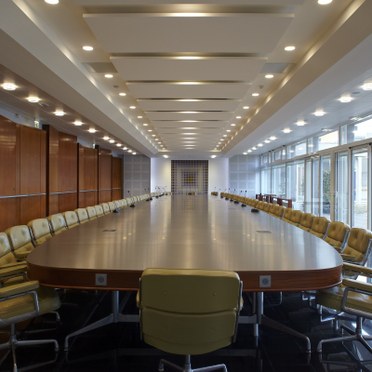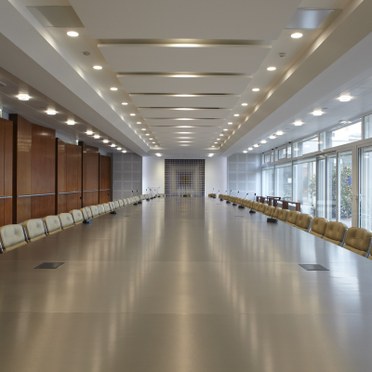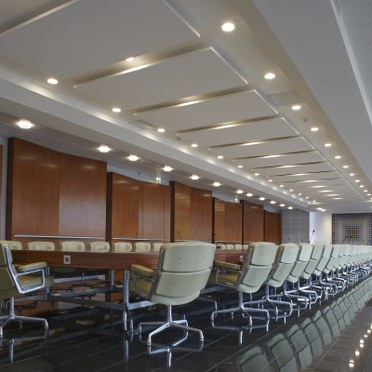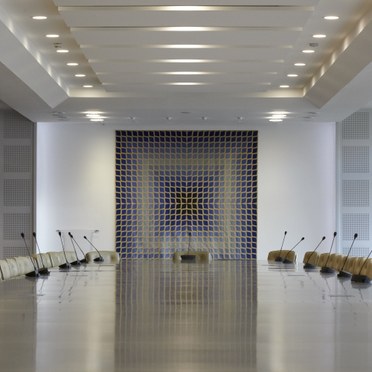UNIWERSYTET W TULUZIE, FRANCJA
- Lamp efficacy
Lamp efficacy
Ensuring the lamp efficiently converts electricity into light (lm/W).
- Ballast classification
Ballast classification
Controlling the electricity supply to the lamp (Energy Efficiency Index).
- Luminaire distribution
Luminaire distribution
Controlling light emission using optics which bend and shape the light to the correct location.
- System efficacy
System efficacy
Combining optical and thermal control within the luminaire (luminaire lm/W).
- Presence/absence detection
Presence/absence detection
Providing lighting only when it’s needed.
- Daylight detection
Daylight detection
Reducing waste light during daylight hours.
- Constant illuminance
Constant illuminance
Producing the correct lighting levels for the duration of the maintenance period.
- Task-scene setting
Task-scene setting
Allowing the user to set scenes and adapt the lighting to different tasks.
- Timed off
Timed off
Automatic cut-off to turn all lights off during unoccupied hours.
- Task lighting
Task lighting
Lighting task areas with the correct amount of light.
- Zoning of lighting
Zoning of lighting
Zoning lighting in accordance to occupancy patterns or window location.
- Maintenance schedule
Maintenance schedule
Tailoring maintenance schedules in accordance to product age, performance and environment.
- Waste light
Waste light
Eliminating waste light which does not hit the intended target.
- Reflectance
Reflectance
Taking advantage of light which is reflected from the surface within the space.
- Visible smart metering
Visible smart metering
Enabling results of actions to be quickly seen as increased or decreased energy use to encourage responsible energy consumption.
Oprawy kubełkowe LED w uniwersyteckiej sali zebrań
Drugi najstarszy uniwersytet we Francji - Uniwersytet Tuluza I – Capitole, założony w 1229 roku – niedawno uruchomił najnowocześniejszą oprawę świetlną LED, która łączy ze sobą setki lat w efektywny i wydajny sposób.
Projektanci oświetleniowi Tassera wykorzystali połączenie wpuszczonych opraw 18W Base LED oraz opraw kubełkowych 33W Cruz 160 LED z dekoracyjnym szkłem matowym, które znajdują się w sali zebrań im. Gabriel Marty. Oprawy oświetleniowe LED zostały wybrane ze względu na ich wysoką wartość strumienia świetlnego (kolejno, 1000 i 2000 lumenów) i sprawność, a także długą trwałość użytkową oraz doskonałe oddawanie barw. Wymieniając świetlówki 58W, nowy projekt oświetleniowy podniósł poziom natężenia światła z 250 do 400 luksów, jednocześnie utrzymując obciążenie na tym samym poziomie – 2,5 kW.
Nowe jednostki ściemniania – w liczbie prawie 100 – są użyte w czterech regularnych rzędach z oprawą Cruz 160 LED na zewnątrz w celu zagwarantowania równomiernego i wolnego od olśnień światła, ponad stylowym i eleganckim drewnianym stołem konferencyjnym i otaczającą go wypolerowaną podłogą. Uzupełnieniem świateł sufitowych są nastawne oprawy kubełkowe D-CO LED Gyro, które wykorzystują skupiska diod 1,2 W do podświetlenia kluczowej grafiki centralnej na końcu ściany.
Pomieszczenie zostało zaprojektowane przez miejscowego architekta Charrièreet Jacoba, natomiast instalacja elektryczna została wykonana przez INEO, Tuluza.




